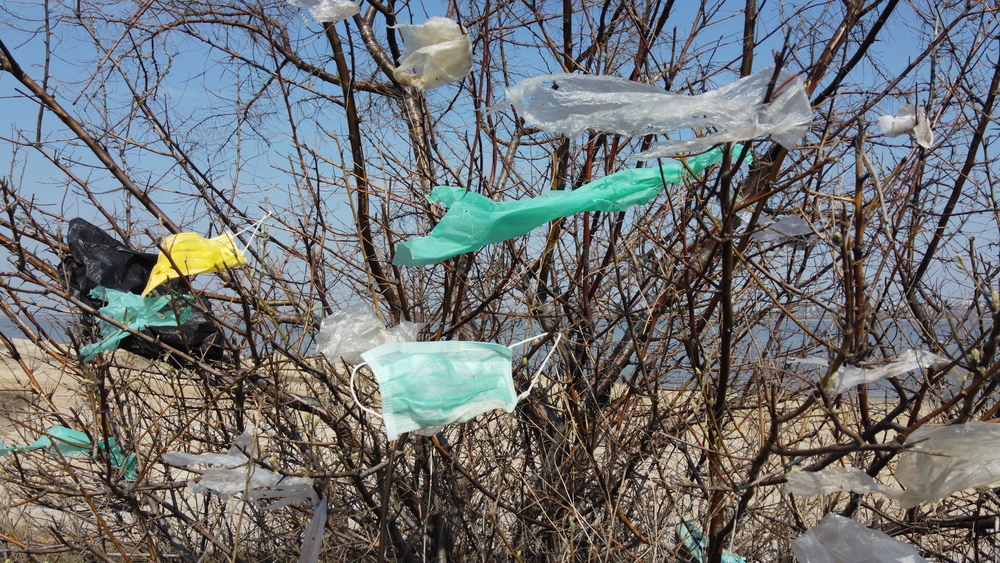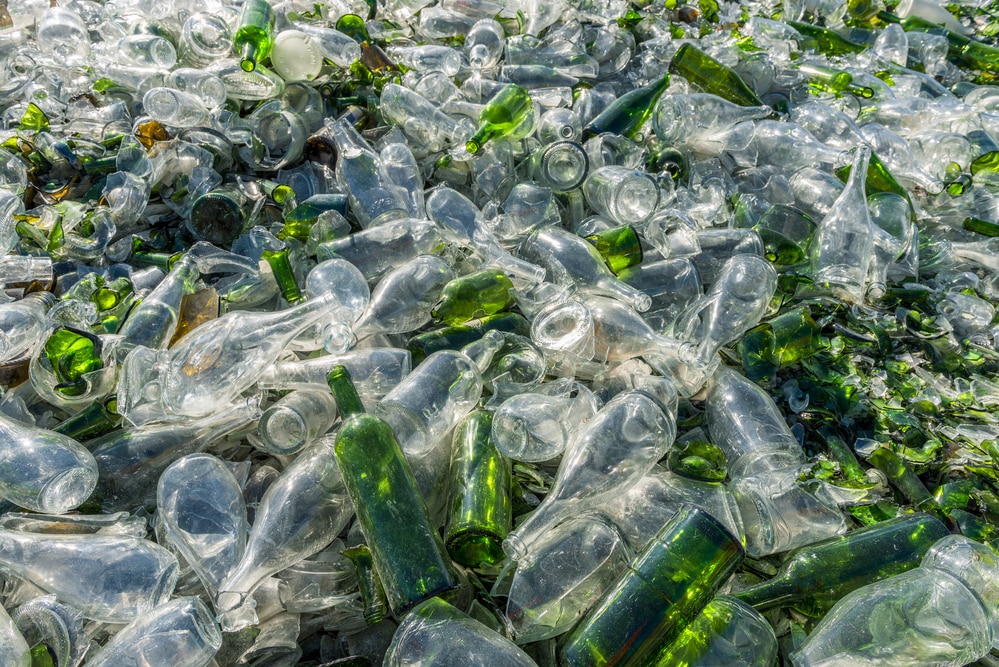|
|
Recycling Facts
If there’s one thing that we can all do to help the environment, it’s recycle. Recycling involves taking unwanted or used materials, and remanufacturing them into new products. Essentially, it’s taking something that would become trash, and making something new.
Recycling has many benefits. It helps reduce our impact on the environment, it helps support sustainability, and reduces our carbon footprint. It can even make you money!
Despite this, recycling rates in the United States are low. According to the Environmental Protection Agency (EPA), almost 75% of items that end up in our waste stream could be recycled. Currently, only 30% of that waste is being recycled.
To help provide a better understanding of recycling in the U.S., we’re taking a closer look at some surprising recycling facts.
Plastic
The most recent data from the Environmental Protection Agency highlights that plastic makes up 12% of municipal solid waste (MSW) in the United States. That translates to an astounding 35.7 million tons of plastic waste. In contrast, we only recycled 3.1 tons of plastic.
The recycling statistics highlight how low our plastic recycling rates really are. Did you know:
“Everyone can help our environment if we just say no to single use plastics.” - Scott R. Gardner. CEO / Founder Recyclingbin.com
Plastic Bags 
Plastic bags are a common source of plastic waste. On average, Americans use 100 billion plastic bags every year! Despite this, only 1% of plastic bags are recycled.
Plastic bags have a significant impact on our environment. Consider that: It takes 12 million barrels of oil to produce one year’s worth of plastic bags in the U.S. Driving one mile uses approximately the same amount of gas required to produce 14 plastic bags. Plastic bags are, on average, only used for about 12 minutes, Environment Massachusetts reports. Plastic bags are the most commonly found trash during coastal clean ups, according to PADI.
The impact of plastic bags has not gone unnoticed. More and more states are now actively seeking to reduce or eliminate single use plastic bag waste. Some states have implemented fees for single-use plastic bags.
Other states, such as California, New York and the District of Columbia, are pushing for more plastic bag recycling rates. They have introduced legislation that prevents retailers from offering single-use plastic bags unless they also offer a recycling receptacle in-store.
Plastic bag recycling bins for grocery and shopping bags are a convenient way to collect plastic bags. Even one plastic bag recycling bin can go a long way towards reducing landfill.
Aluminum 
Aluminum is almost infinitely recyclable. It is a valuable recycling resource, and has significant environmental benefits. The Aluminium Association estimates that almost 75% of the aluminium produced in the U.S. is still in use today! Here are some other aluminum recycling facts:
A used aluminum can is recycled and back in use as a new can in as little as 60 days. Used aluminum cans are the most recycled item in the U.S. Other types of aluminum, such as siding, gutters, car components, storm window frames and lawn furniture can also be recycled. There is no limit to the amount of times aluminum can be recycled. Recycling one aluminum can saves enough energy to run a TV for three hours or saves the equivalent of half a gallon of gasoline. Recycling aluminum saves over 90% of the energy required to produce new aluminum.
When it comes to materials that can generate revenue through recycling, aluminum tops the charts. Unfortunately, Americans throw away over $700 million worth of aluminum cans, each year!
Using clearly distinguished recycling bins, like the Hexcycle® IV Max, makes it easier for end-users to recycle their aluminum appropriately. In turn, that can boost your revenue through recycling. Demand for aluminum isn’t going anywhere anytime soon!
Metal / Steel Metal is a material that, in some cases, is almost infinitely recyclable. Unfortunately, metal is a material that can often end up in landfill. Multi-sort metal recycling bins can make it easier. These facts should help encourage you to recycle your metal: Recycling steel and tin cans saves 74% of the energy used to make them from virgin materials. A steel mill using recycled scrap reduces water pollution, air pollution, and mining waste by about 70%.
Glass 
Glass is a great material to recycle. When processed correctly, glass can be recycled endlessly and not lose its quality. However, glass recycling faces challenges. Single stream recycling bins can contaminate glass products, and reduce glass recycling rates. Separate recycling bins for glass, cans, bottles and aluminum can make separating recyclable materials easier. Here are some other facts about glass recycling:
80% of glass is estimated to be recycled into new containers. By making new glass bottles from 50% recycled material, enough energy is saved to power 45,000 households for a year and prevent 181,550 tons of waste from entering landfills each month. A typical glass processing facility can recycle 20 tons of color-sorted glass per hour.
Paper Generally, we’re pretty good at recycling our paper. According to the EPA, in 2018 paper had an average recycling rate of 68.2%. With good reason too! Consider that: Recycling 1 ton of paper saves 17 mature trees, 7,000 gallons of water, 3 cubic yards of landfill space, and 380 gallons of oil! Every ton of paper recycled can save the energy equivalent of 165 gallons of gasoline. 17 trees can absorb a total of 250 pounds of carbon dioxide from the air each year. Burning that same ton of paper would create 15,000 pounds of carbon dioxide. The process of recycling paper instead of making it from new materials generates 74% less air pollution and uses 50% less water. Manufacturing recycled paper uses only 60% of the energy needed to make paper from new materials. The construction costs of a paper mill designed to use recycled paper is 50% to 80% less than the cost of a mill using new pulp.
A paper recycling bin can make it easy to keep paper out of your waste stream. Increase office recycling rates with a conveniently placed recycling receptacle. Browse our range of outdoor and indoor paper recycling bins here.
Corrugated Cardboard Up to 80% of products sold in the United States are packaged in cardboard. A significant amount of this cardboard ends up in the solid waste stream. The benefits of recycling corrugated cardboard are clear. Here are some corrugated cardboard recycling facts:
Up to 80% of products sold in the United States are packaged in cardboard. A significant amount of this cardboard ends up in the solid waste stream. The benefits of recycling corrugated cardboard are clear. Here are some corrugated cardboard recycling facts:
Recycling cardboard saves 24% of the energy required to create new cardboard. Recycling one ton of cardboard can save the equivalent of 46 gallons of oil. Recycling one ton of corrugated cardboard saves up to 700 gallons of water.
The Growth of LandfillAcross the world, landfills are growing at a phenomenal rate. Globally, we produce 1.3 billion tons of landfill annually. This figure is projected to rise to an eye-watering 2.2 billion tons by 2025. Of this, the U.S. is producing over 290 million tons of municipal solid waste.
 Since recording began in 1960, year on year we’ve been producing more trash. This is filling over 2,000 landfills around the country. Space is going to run out.
Since recording began in 1960, year on year we’ve been producing more trash. This is filling over 2,000 landfills around the country. Space is going to run out.
The EPA estimates that 75% of the waste stream in the U.S. could be recycled. Unfortunately, recycling rates in the United States have never risen above 35%, the recycling rate recorded in 2017. In fact, from 2018 onwards, recycling rates have dropped.
Recycling is one thing that we can all do to help reduce landfill. Imagine this. If the U.S. achieved a recycling rate of 75%, it would be like removing 50 million cars from the roads. That’s an enormous impact. Remember: Reduce, Reuse, Recycle!
Interested in learning more about what happens to recyclable materials once they’ve been collected? Learn more about the recycling process here.
|
|
|
|